Nuns
“In the heart of the Church, I shall be love. Thus I shall be everything."
– St Therese of Lisieux –
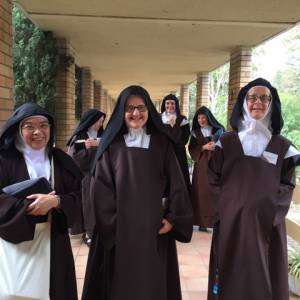
Within the broader family of Carmel, the Discalced Carmelite Nuns stand in a tradition of women called to live a life of allegiance to Jesus Christ, following the example of Saint Teresa.
While for most of us the development of our spiritual life is of a more mundane and simple form, Teresa’s spiritual journey was marked by numerous mystical experiences that gradually led her to the reform of the Carmelite way of life as it was lived in her day. At the heart of her efforts at renewal was her insistence that her Carmels be places where a small number of sisters would be gathered together, their lives centred on Christ. Because she understood prayer as friendship with Christ, Teresa wanted her daughters to let this friendship flow over into their everyday lives with each other.
The community model she held up to her daughters was that of the apostles gathered around Christ, listening to him, pondering his words and devoting themselves to the spread of the Kingdom he had come to establish. Following this apostolic example, Teresa wanted to ensure that the prayer and sacrifice of the sisters who would follow her pattern of life was directed to the good of the Church. In order to carry out this task more faithfully, Saint Teresa chose an enclosed way of life that was meant to facilitate the full gift of self to God in the contemplative life.
Those of us who live this vocation in the Church today are called to ‘a hidden union with God’ in friendship with Christ. We take Mary our Mother as a special companion and guide. She exemplifies the contemplative way of life as she pondered the Word of God in her heart and lived in obedience to that Word. Like her we are called to contemplation as a way of prayer and a way of life.
We live in small communities and our life is a rhythm of liturgical and personal prayer, work and recreation, of times when we are alone and times when we are together. We have a sense of being part of a wonderful array of women who have followed this way of life in great holiness. They remain an inspiration for us and for many others who feel attracted to Carmelite spirituality.
There are various Monasteries of sisters living the Carmelite way of life in this region, and if you select any one of the links for the individual Monasteries you will find information about how each community lives out our vocation. Because a sister enters a Monastery for life (at least this is the usual thing), it means that the different Monasteries take on a characteristically Carmelite aspect that is shaped by the individual sisters that make up the community in question. While we all follow the same Constitutions, each of the Monasteries interprets them in slightly different ways and this means that the various facets of the Carmelite charism are emphasised in a diversity of ways. What we aim for is unity in diversity rather than uniformity.
Allow yourself to be surprised by the beauty of Carmel!
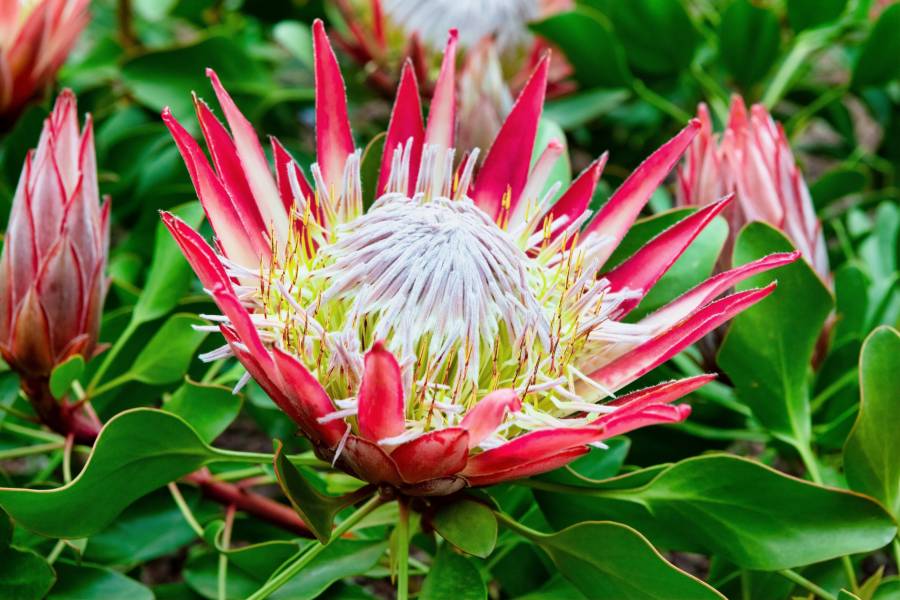
Most of these communities are united in the Association of Our Lady of the Southern Cross.
To learn more about the Association, visit www.associationolsc.org.au
We are an enclosed, contemplative community of nuns whose lives are dedicated to prayer for the needs of the Church and the whole world. Goonellabah is just outside Lismore, so often we are called “Lismore Carmel.”
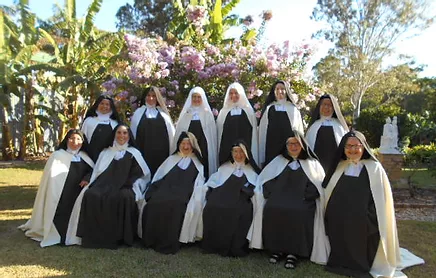
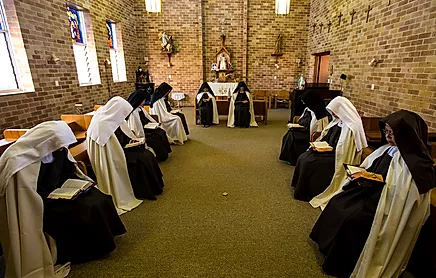
You are most welcome to contact us, and to visit our website:
Carmelite Monastery
591 Ballina Road
Goonellabah NSW 2480
Phone: +61 (02) 66 241240
Email: goonellabahcarmel@bigblue.net.au
Website: www.flowerofcarmel.com
The Carmel of Our Lady of Lourdes, Gelorup, is located near the city of Bunbury in the South West region of Western Australia. Our Carmel was founded from Bangkok Carmel, Thailand, in 1976 by an invitation of Bishop Myles McKeon who had visited Bangkok Carmel in 1974. We first stayed in Dardanup for 7 years and moved to Gelorup in 1984. Our Monastery is surrounded by extensive areas of native bushland.
We live a life of prayer in silence, solitude and simplicity according to St. Teresa of Jesus. It is a life of friendship with Christ and wholly dedicated to the Mission of the Church. Our life in Carmel is a balanced Christian, and human life; a sisterly community as St. Teresa of Jesus said, “All must be friends, all must love one another, all must be cherished and all must help one another."
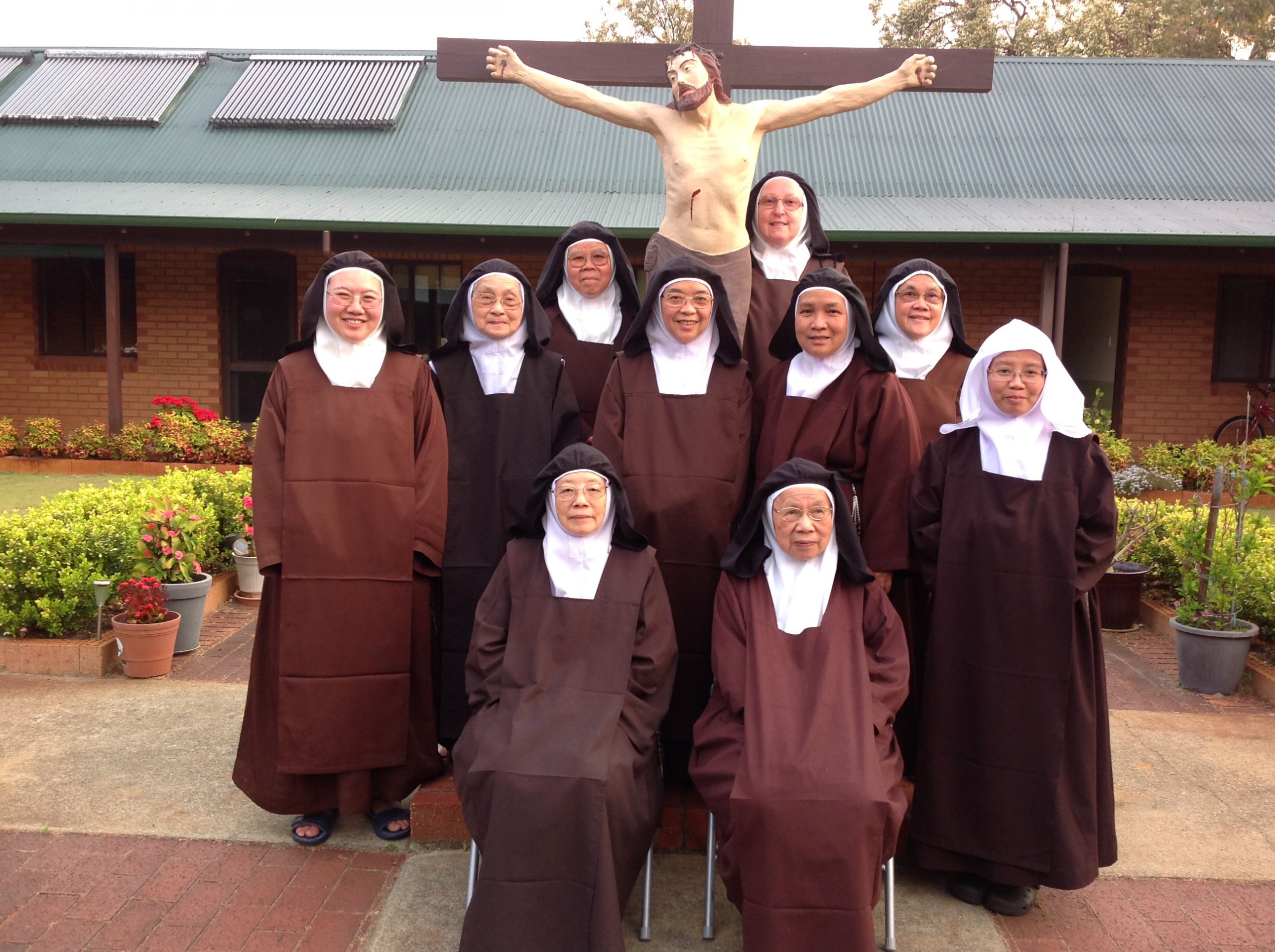
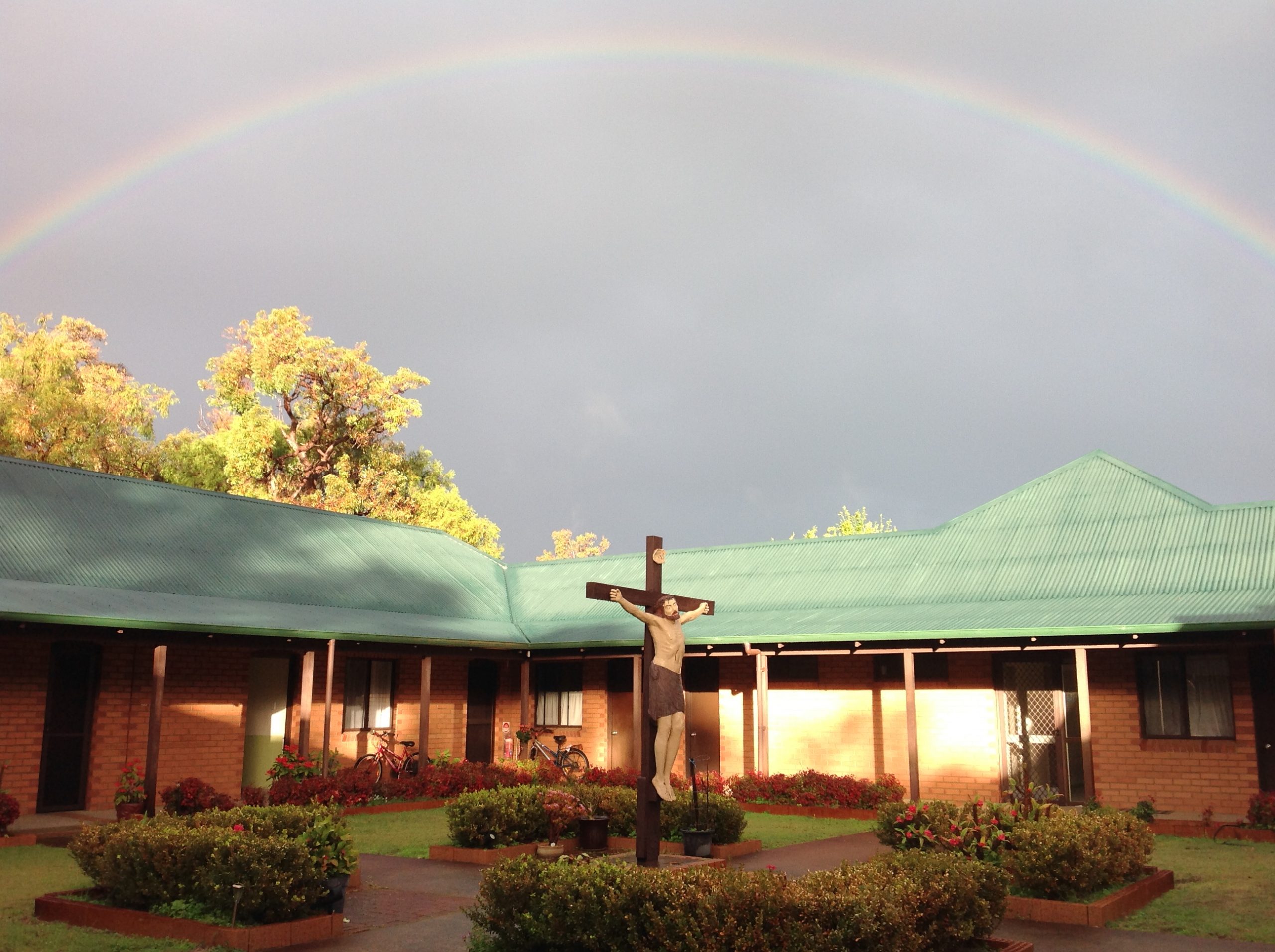
You are welcome to contact us:
Carmelite Monastery
66 Gelorup Rise
Gelorup WA 6230
Phone: +61 (08) 9795 7807
Email: prioressgelorup@gmail.com
We were founded from Kew Carmel, Melbourne in 1935. The Sisters have been a prayerful presence in the Archdiocese through the years and the monastery became a centre for those seeking a spiritual path.
Pope Francis recently said that “to contemplate is to gift oneself with time to be silent and to pray. To take time for contemplation is also to take time to look at the other and to place oneself under God's gaze.” We endeavour to look on our world with its many needs mindful that we do so under God’s gaze.
The photo is of the statue of Our Lady of the smile that graced our monastery cemetery, and that in memory of the many Sisters who lived in the Carmel, has travelled with us from home to home. She sits in our garden reminding us of God’s compassion, and with Mary we continue “to stand before the face of the living God”(1 Kings 1:17).
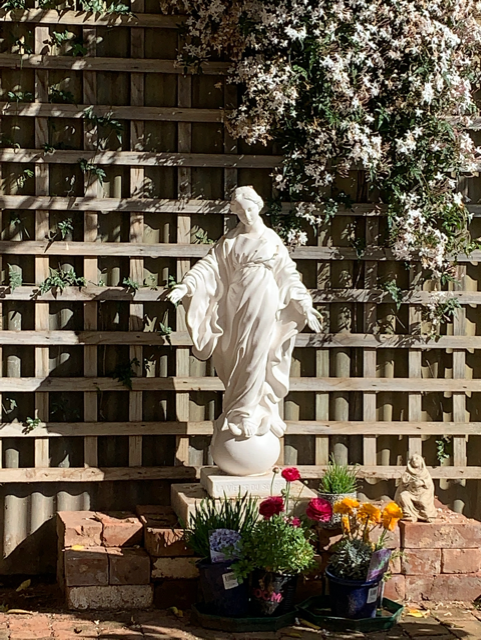
You are welcome to contact us:
Carmelite Monastery
PO Box 226 / 11 Percy Street
Semaphore SA 5019
Email: ocdadel@tpg.com.au
Since 1948, we have been blessed to live with joy the Teresian charism of hidden prayer and sacrifice, praise, adoration and thanksgiving at the heart of the Church in the Archdiocese of Hobart. Initially founded at Longford in northern rural Tasmania, and now nestled in the hills above the Cataract Gorge overlooking the City of Launceston, we live our traditional purely contemplative vocation as St Teresa desired within the strict enclosure, which creates the “cloistered desert" where a life of intense prayer as intimate friendship with Christ can flourish for the sake of the Church and the world.
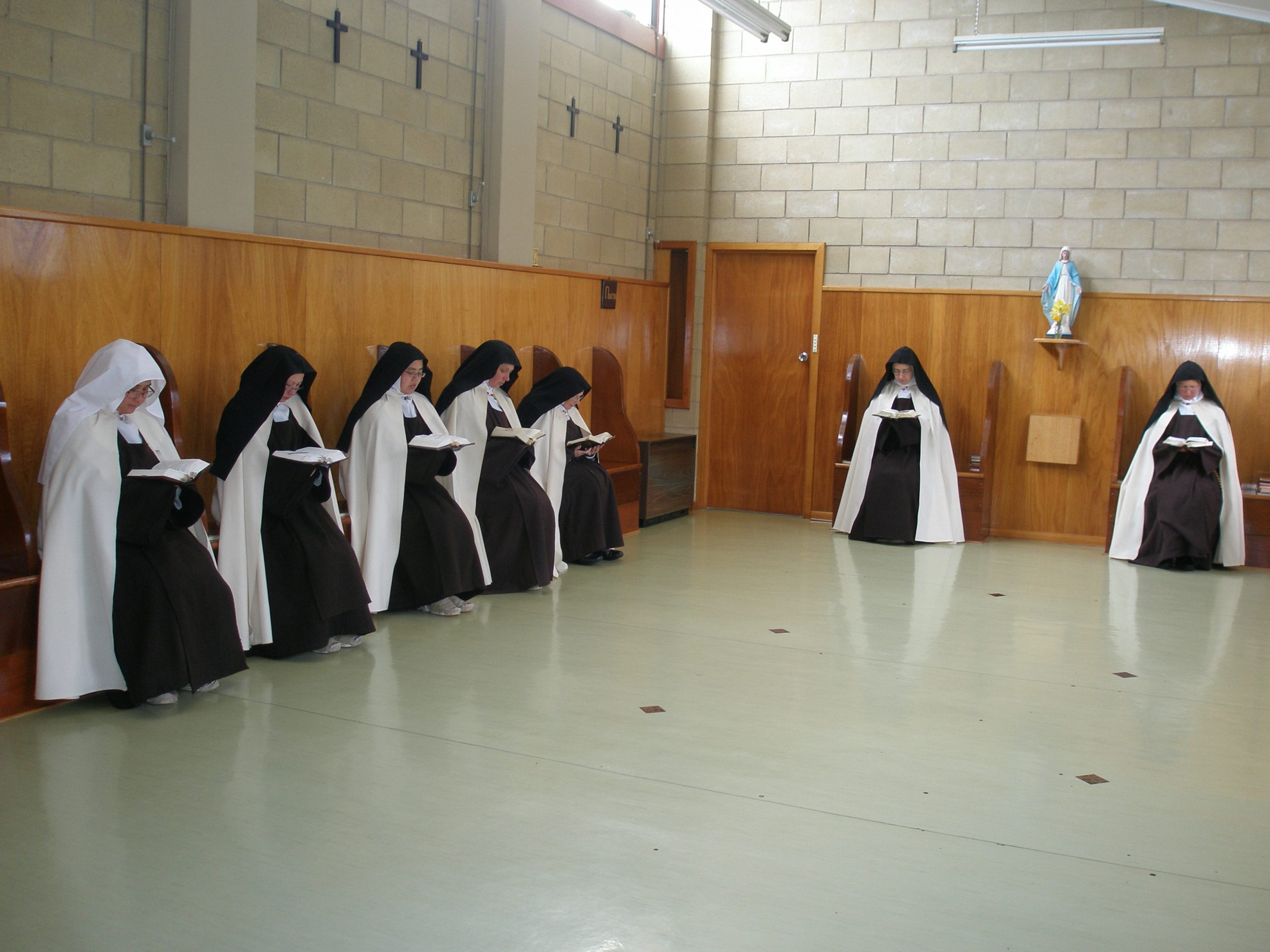
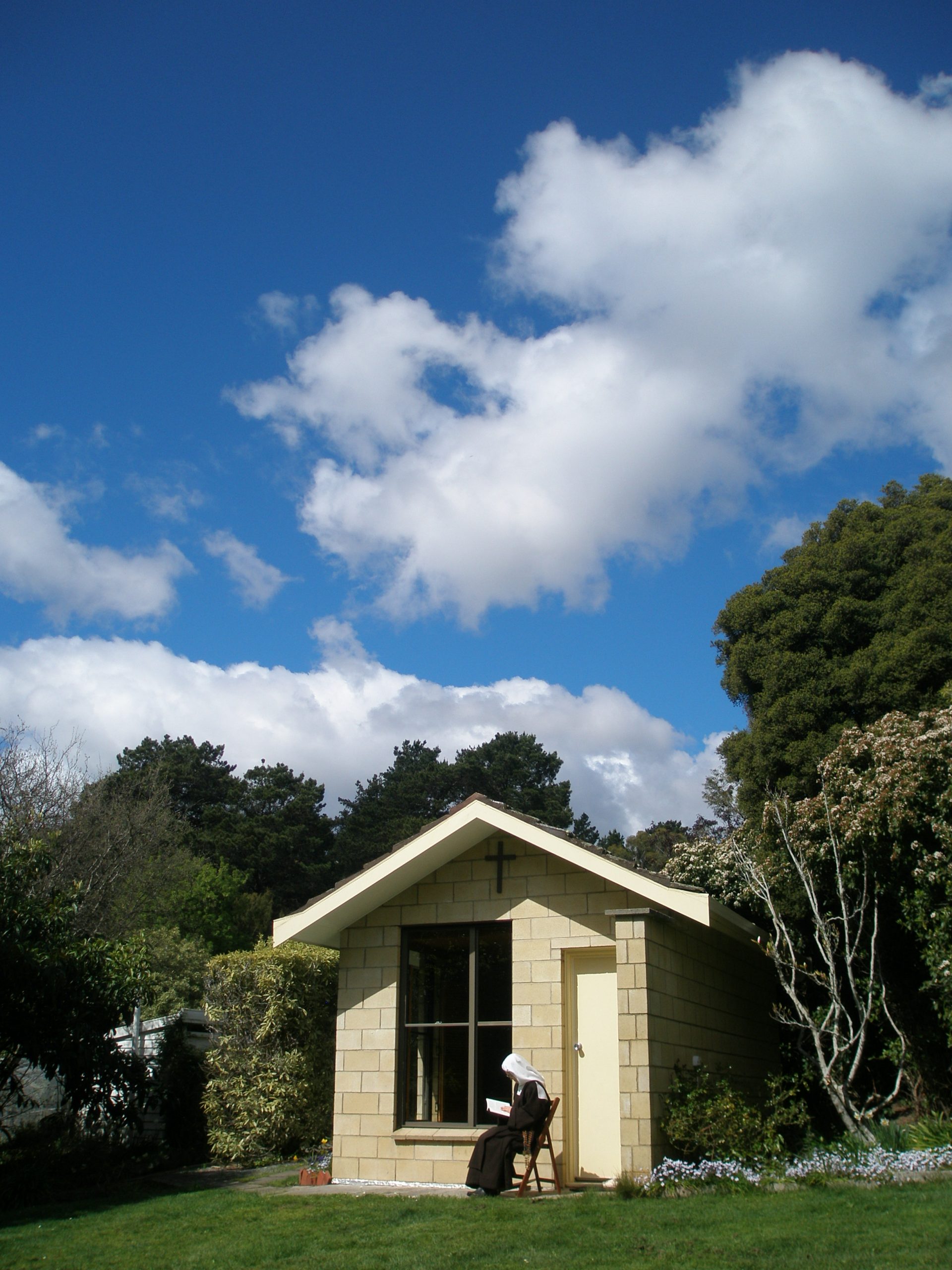
You are very welcome to contact us and to visit our website to learn more about our Carmel:
Carmelite Monastery
7 Cambridge St
Launceston TAS 7250
Phone: +61 (03) 6331 3585
Email: tascarmel1@gmail.com
Website: www.launcestoncarmel.com
Holy Trinity Carmel has been a vital part of the Perth Archdiocese for over 85 years. A diverse multicultural community we reflect the wide range of people who live in the vibrant state of Western Australia. Our monastery occupies a little over four acres in the garden suburb of Dalkeith close to the heart of Perth. A large part of the property has always been left as natural bushland to provide a place of refreshment and quiet retreat for the Sisters as we live our lives in papal enclosure. Plantings of native plants throughout the grounds contribute to attracting the abundant bird life which constantly provides us with delight along with accompanying us in singing the divine praises. Essential members of the community are our dogs who roam through the extensive grounds providing a AAA security service while lavishing their affection and devotion on the Sisters.
We support ourselves through making Altar Breads and have just opened an online shop Carmel Craft through which we sell handcrafted olive wood products made by the Christian community in the Holy Land along with inspirational and decorative giftware. Several of the Sisters contribute their artistic and creative talents and make items for sale. Our life is simple and hidden, dedicated to prayer and pondering the Word of God in emulation of the Blessed Virgin Mary.
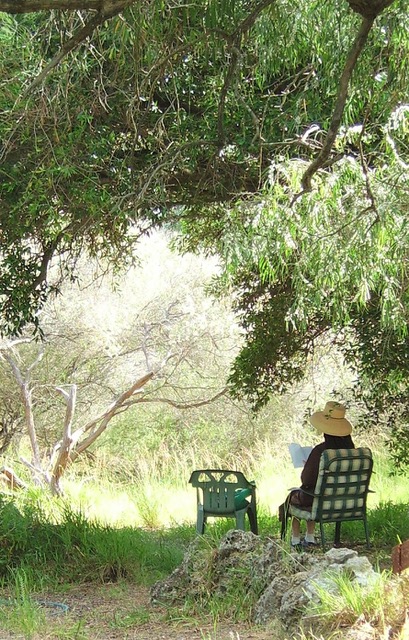
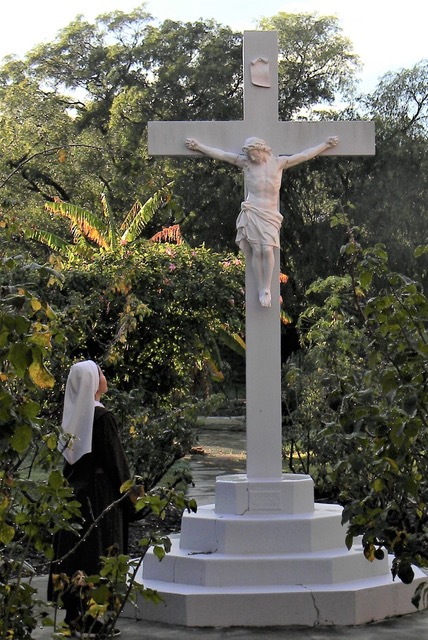
You are very welcome to contact us and to visit our website:
Carmel of the Holy Trinity
100 Adelma Road
Dalkeith WA 6009
Phone: +61 (08) 9386 3672
Email: holytrinitycarmelau@gmail.com
Website: www.holytrinitycarmel.com.au
The Carmel of Holy Spirit, in the outer Brisbane suburb of Ormiston, overlooking Moreton Bay and the islands, was founded from Sydney Carmel in 1927. For 38 years the community lived in an old home at Auchenflower, until the monastery was built on the site of historic Ormiston House in 1965.
Our beautiful, spacious grounds enable us to maintain a peaceful solitude, conducive to prayer, while enabling us to grow a few fruit trees and vegetables for our community needs. A strong spirit of unity and joy has enabled us to adapt our traditional lifestyle and customs to the realities of today’s society with creative fidelity at a pace acceptable to all. People from near and far share in our liturgy and appreciate quiet time in our Church, while the presence of the Santa Teresa Spirituality Centre next door strengths the bonds with our Archdiocese.
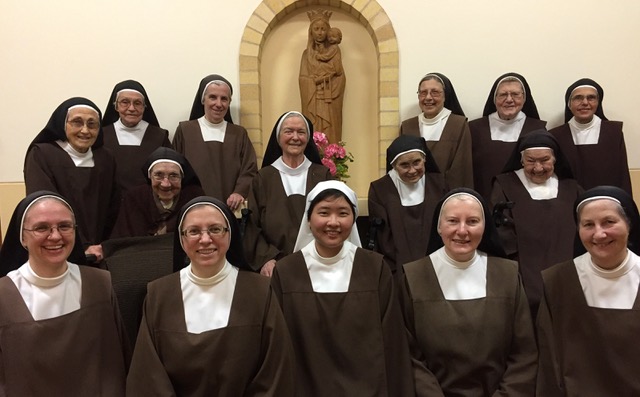
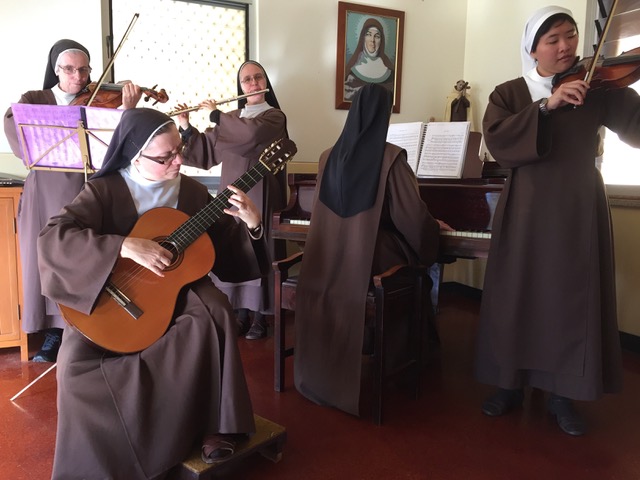
You are welcome to contact us and to visit our website:
Carmelite Monastery
287 Wellington Street
Ormiston Qld 4160
Phone: +61 (0)466 739 138
Email: prioress@carmeliteormiston.com
Website: www.carmeliteormiston.com
Our community of the Carmel of Mary and Joseph recently transferred from Varroville to Toronto.
Over the years our Carmel has a long history of moving: the first community of Carmelite Nuns came to Australia in 1885 from the Carmel of Angoulême in France and eventually settled in Dulwich Hill, Sydney. From here Carmel reached out around Australia.
In the meantime, in 1901, the community of the founding Carmel of Angoulême went into exile in Belgium, to avoid the prohibitive Law Concerning Associations, which required the community to obtain special authorisation from the Chamber of Deputies or the Senate or face confiscation of their property. With the help of friends of the community, the sisters found a suitable property in the town of Enghien-les-Herinnes, situated a short distance south west of Brussels. It was some years before they were able to return to France, but not to their former Monastery in Angoulême which had been taken over by the Diocesan Bishop as a Seminary. Instead they settled in Tourcoing, a city in northern France on the Belgian border.
In 1949 the community of the Carmel of Angoulême-in-exile was invited to re-locate to Parkes, New South Wales. In 1987, these two Carmels, Parkes and Dulwich Hill, merged together to establish a new community at Varroville which is located about fifty kilometres south-west of Sydney. Various circumstances led to our decision to transfer our community to Toronto, New South Wales.

You are welcome to contact us:
Carmel of Mary and Joseph
26 Renwick Street
Toronto NSW 2283
Email: prioress@carmelvarroville.org.au
We are a multicultural Community, dedicated to prayer. Our Monastery is an enclosed contemplative Community of the Order of Discalced Carmelites founded by Saint Teresa of Jesus (Avila).
In 1937, at the request of Bishop Liston, our Monastery was founded from Sydney and our Titular Patron is Saint Thomas, Apostle.
“Every Sister will find in Mary a mother and teacher in the ways of the Spirit who will conform her to Christ and lead her to the heights of holiness" (Constitutions).
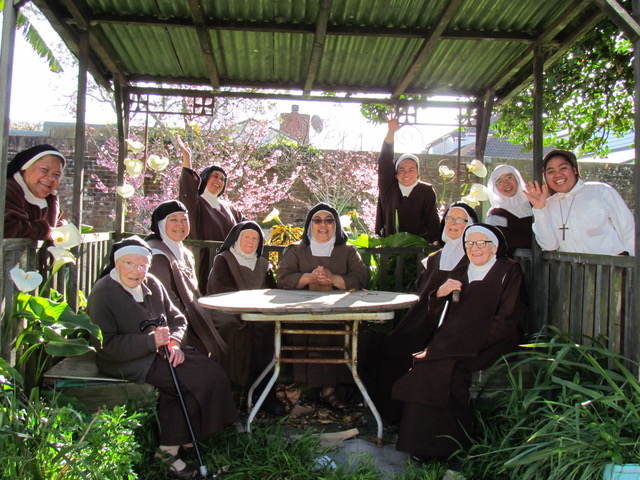
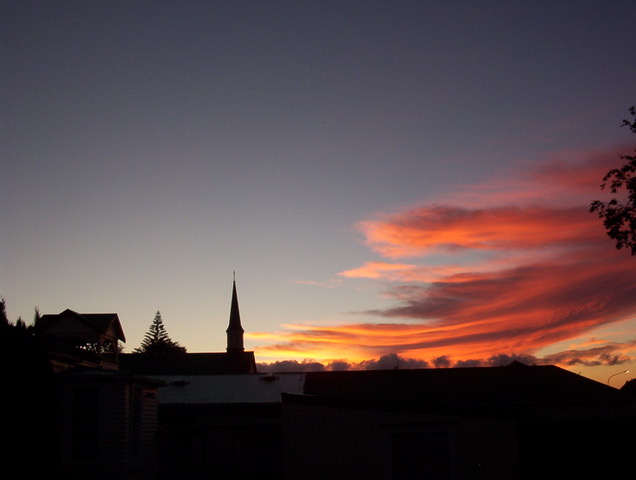
We welcome enquiries:
Carmelite Monastery
636 Mt Albert Road
Royal Oak, Auckland 1023
New Zealand
Phone: +64 (09) 625 9680
Email: carmelak@xtra.co.nz
Website: www.carmelites.org.nz
We are a community of contemplative nuns living a life of prayer in the city of Christchurch, New Zealand. We come from 5 different nations and from several generations, but are all united in our quest to seek God and draw others to Him.
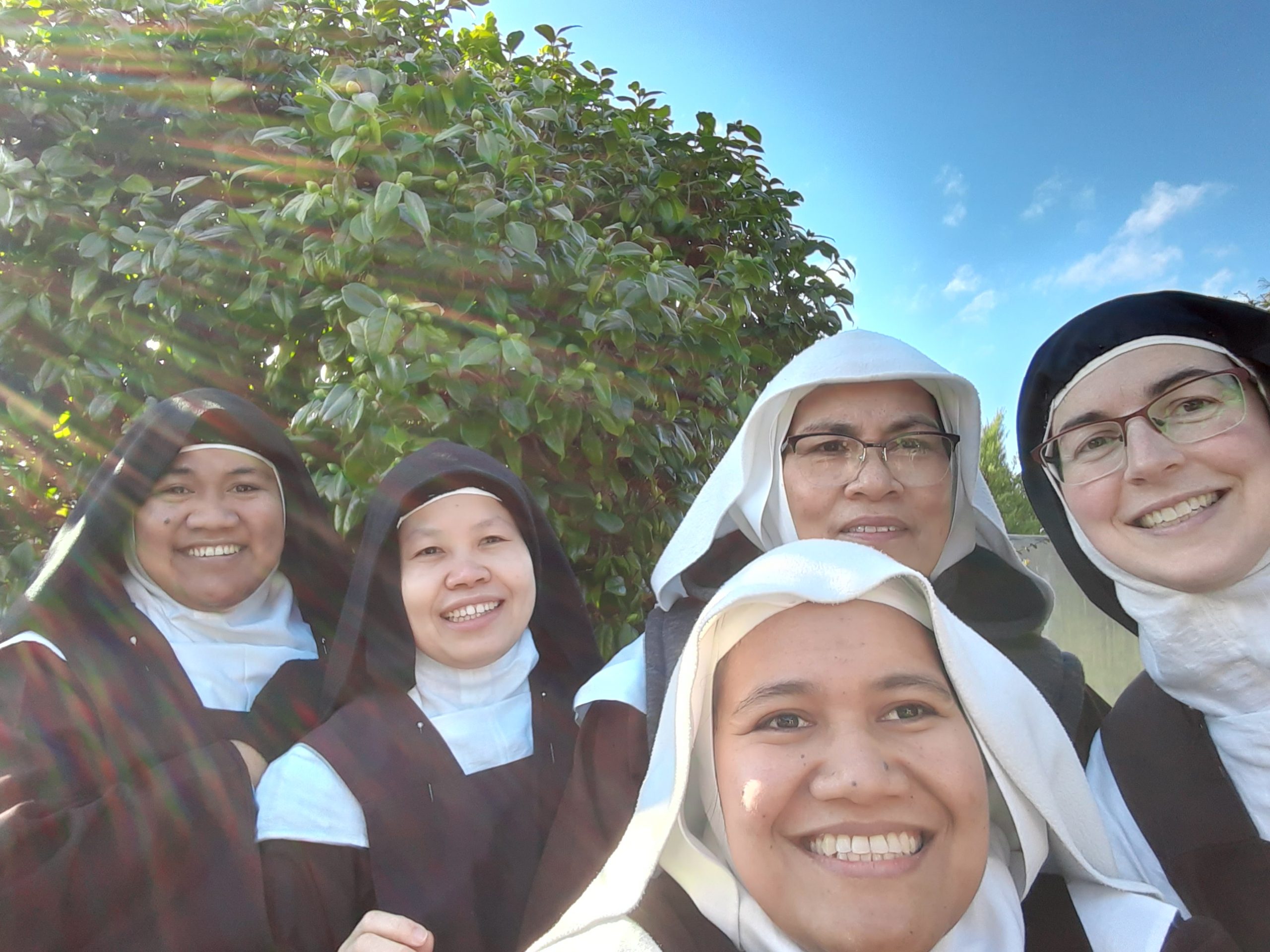
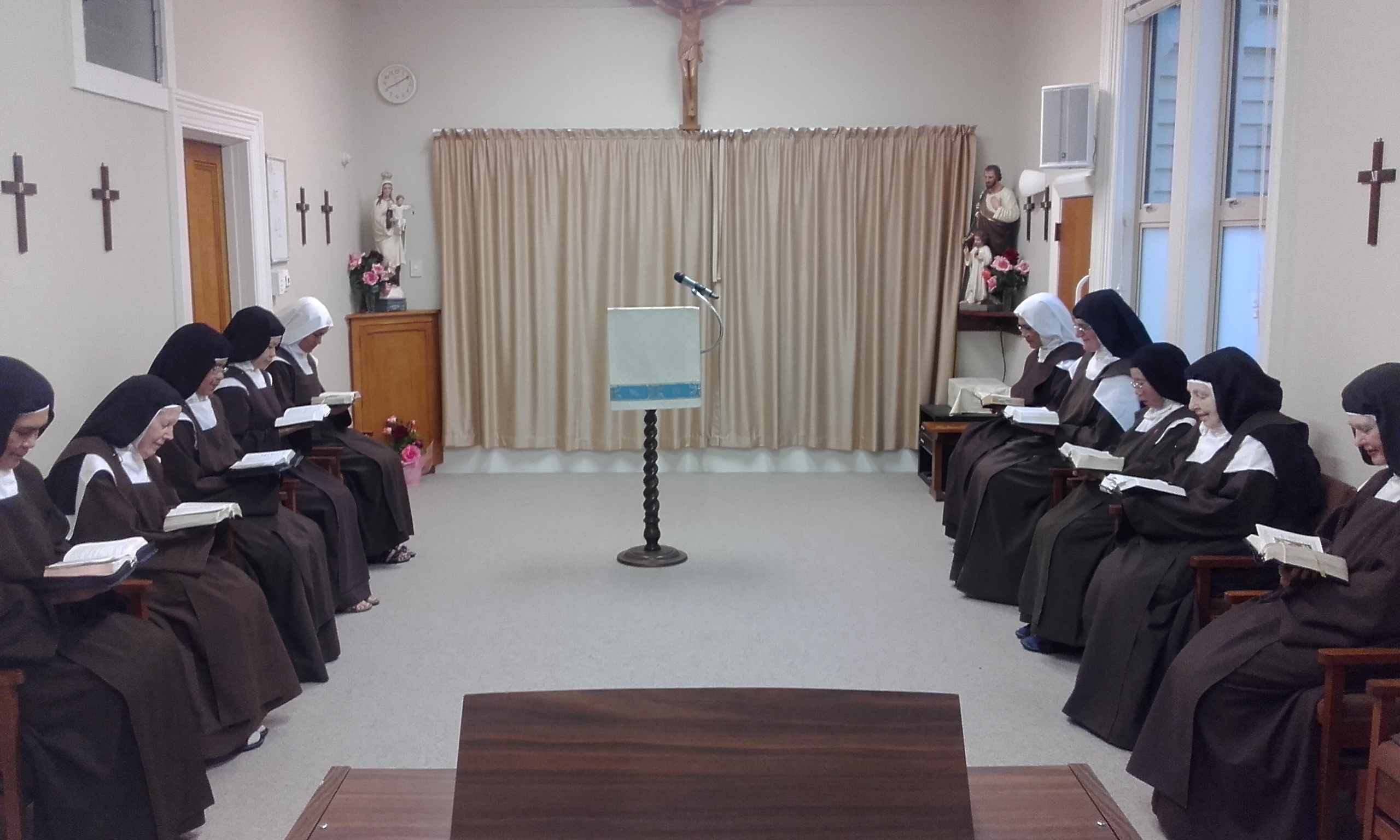
You are welcome to contact us and to visit our website:
Carmelite Monastery
52 Halswell Road
Christchurch 8025
New Zealand
Phone: +64 (03) 338 9370
Email: ocdchch@xtra.co.nz
Website: www.christchurchcarmel.org.nz
Called to a hidden life of prayer and sacrifice we live each day in intimate union with Christ for the good of the Church and the salvation of souls.
Our Carmel of St Joseph was founded from the Carmel of Christ the King Christchurch, New Zealand, in 1959 by an invitation of Bishop George Hamilton Pearce, S.M.
Although we come from different cultures and backgrounds we strive to live in sisterly love and fraternal charity as Our Holy Mother wants.
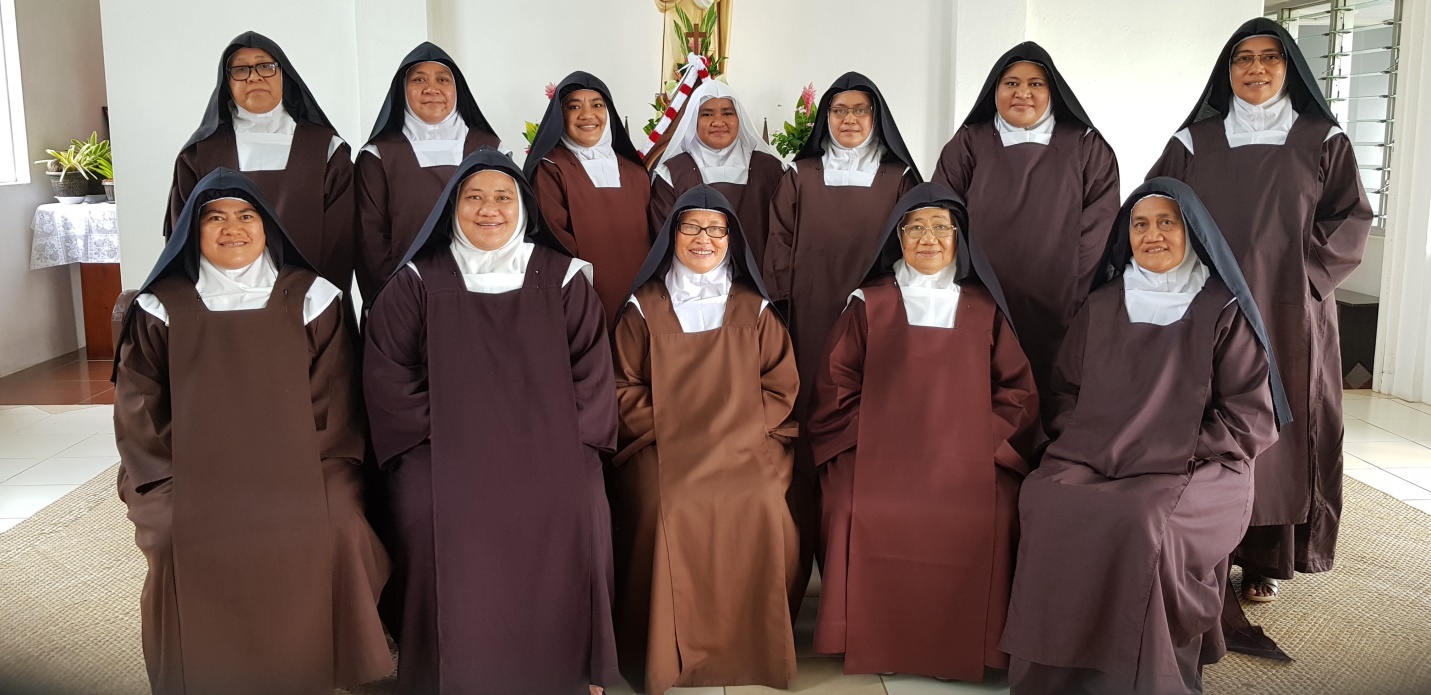
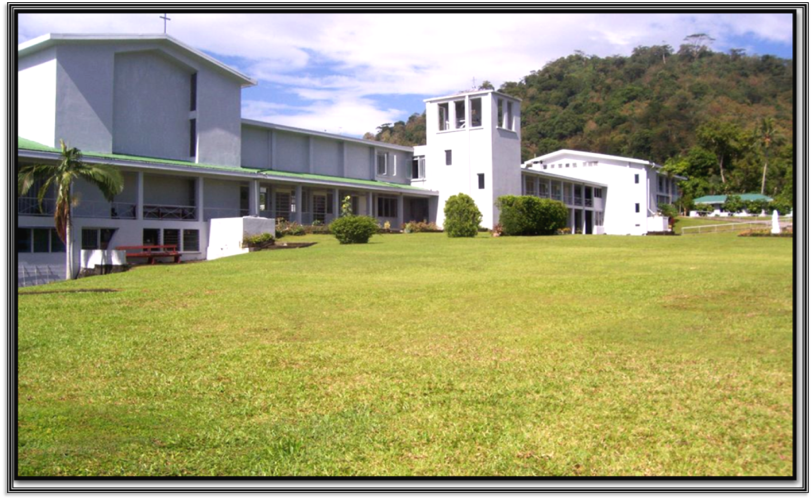
You are very welcome to contact us:
Carmelite Monastery
Private Bag
Apia
Samoa
Phone: +685 21 731 / 752 1731
Email: monike@lesamoa.net
A self-governing overseas territory of France, the Wallis and Futuna Islands are two groups of islands in the south-western Pacific Ocean, between Fiji and the Samoas. Founded in 2003 by the Carmel of St Joseph, Samoa, our Carmel is named after Saint Thérèse of the Child Jesus. The monastery is situated on Mt Holo, on the summit of Wallis Island and commands a magnificent view of the sea on all sides.
As French is the language of the schools, few people are fluent in English. Formation lessons are given in French and Wallisien, with one lesson weekly in English. We support ourselves by baking altar bread, making vestments, albs, altar linen, mending and painting statues and by handicrafts. Work in the gardens is shared by all.
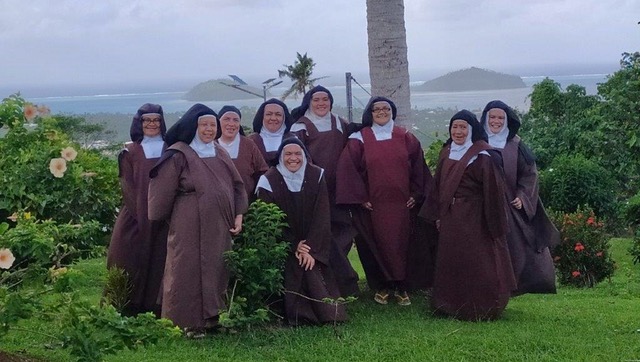
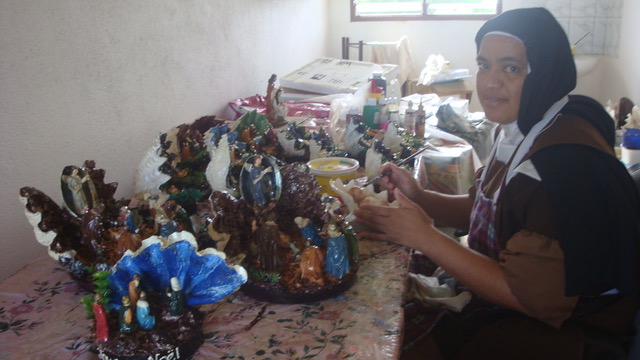
You are welcome to contact us:
Carmel de Ste Thérèse
B. P. 112 Mata-Utu,
98600 Wallis-Futuna
Email: carmel@mail.wf
In March 1931, Carmelite Sisters from Belgium set out by sea on a journey of monastery foundation. They arrived at Guangzhou (China) in May via Hong Kong. The community moved to Hong Kong in 1933, and our present monastery was completed in 1937.
We are presently a total of 13 Sisters in the community, including one Extern Sister, one Temporary Professed and two Novices. Our monastery is situated in the Southern side of the Hong Kong Island, serving our Lord in peace and serenity for more than 80 years.
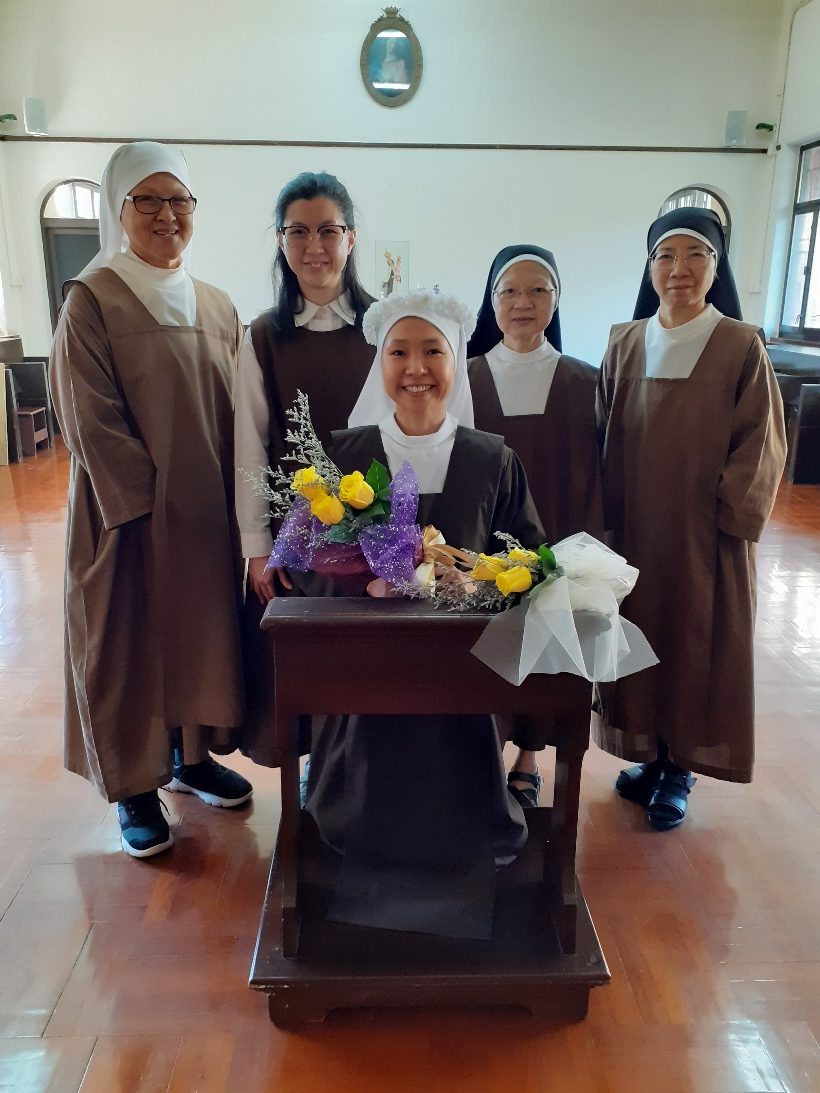
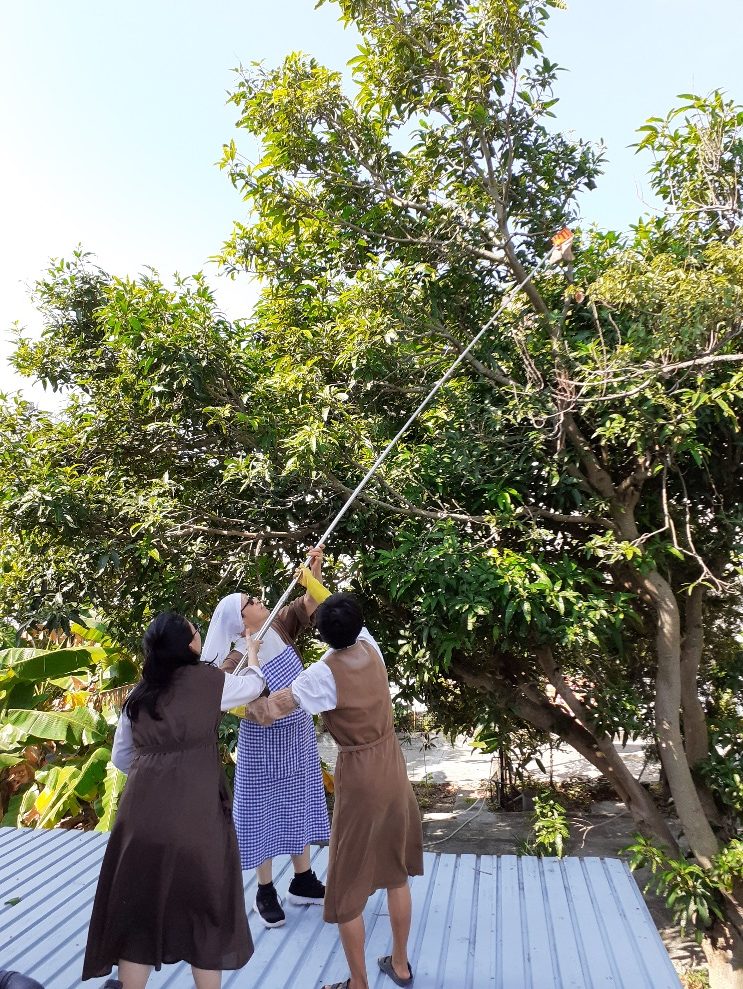
You are welcome to contact us:
Carmelite Monastery
68 Stanley Village Road
Stanley
Hong Kong
Phone: +852 2813 0381
Email: hkcarmel@hotmail.com.hk
We are founded from the Carmel of St Joseph, Apia, Samoa on the 19th March 2011 at the invitation of Bishop Foliaki sm. We are a multicultural Community, from Samoa, New Caledonia, Kiribati and Tonga.
We are working hard to raise money to complete the building of our monastery. We are raising and selling pigs and chickens, making vestments, Altar Bread, mending and painting statues and handicrafts. God helps those who help themselves, we try our best and God will do the rest.
We are blessed to have good vocations. Our house is actually full and we hope to start very soon the second part of the monastery which is the Professed side so we can take more girls who are still knocking at our door. We encourage them to continue what they are doing but tell them to try to come every Saturday for instructions with the Prioress and Mistress until we get the rooms ready. As we all know how hard it is to start a new foundation, even though we are busy with so many things, we are still trying as much as possible to live our Carmelite life faithfully, in the silence and solitude of the cloister to pray for the Church and the salvation of Souls, above all to live in unity and love as Holy Mother wants for the little college of Christ.
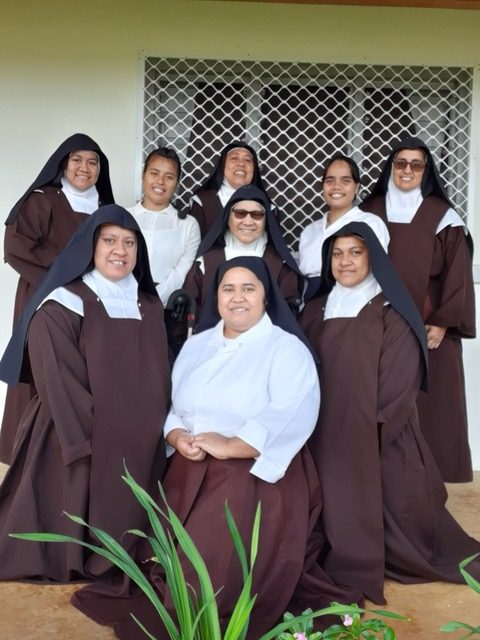
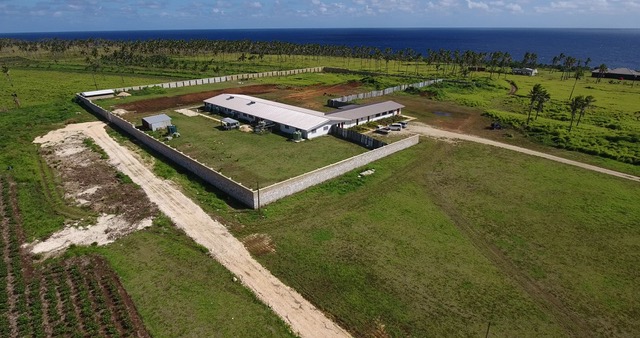
You most welcome to contact us anytime if you feel called to join us:
Carmel of St Teresa
Laumanuhina I Moana – FAHEFA
Po Box 155 NUKUALOFA
TONGATAPU
Phone: (+676) 41544 / (+676) 7793027 / (+676) 8410928
Email: carmelitestonga@gmail.com
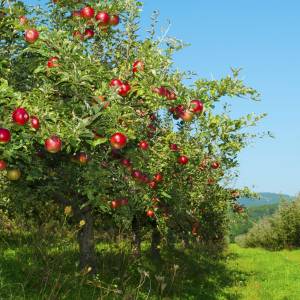
Formation
Formation as a Discalced Carmelite Nun takes place in the Carmelite Monastery a candidate chooses to enter. In the context of religious life, the formation programme is at the service of the person and her vocation. It is a life-long undertaking, but has a special emphasis in the early years of a person’s entry into Carmel.
The formation programme concerns the whole person, her socio/cultural and family background, her gifts and her spiritual journey so that the person may ‘integrate in herself, as consciously as possible, her vocation as woman, Christian and Carmelite nun.’ (Nuns’ Formation in the Teresian Carmel.)
The formation process includes discernment of vocation, spiritual accompaniment, experience of community life and instruction in appropriate subjects such as – scripture, liturgy, prayer, history and spirituality of the Order. It includes the following stages:
- Preparatory time of guidance/instruction from a Sister designated for this purpose once a person makes contact with a Carmel
- A time of aspirancy, lasting from 1-2 years, which may include time spent in the monastery.
- Postulancy, which lasts between 1-2 years.
- A novitiate lasting 2 years.
- Temporary Vows for a minimum of 5 years before making Solemn Vows.
You might ask: ‘How do I know if I am called to Carmel?’ There is no easy answer to this question. Discernment of a vocation to Carmel is a process that requires time and commitment for both the candidate and community. There are some important indicators of a Carmelite vocation, but it needs to be remembered that they are characteristics that take time to develop. They are:
- An attraction to live a life of prayer, understood as intimate friendship with Christ
- A love for Mary, mother and model of contemplative life in Carmel
- A willingness to listen to the Word of God and let it shape your life
- An apostolic desire to pray for the Church, and for the spiritual good of others
- Love for the Church, both in her mystery and her human face
- A sense of being drawn to a life of silence and solitude, which is not an escape from the world, but a penetration into the mystery of Christ
- A capacity to live in community
- A growing love for Carmel and Carmelite spirituality
- An openness to be formed.

This is a brief overview of how the Carmelite Monasteries of women came to be founded in this region. We have a custom of calling our Monasteries 'Carmels.' ‘Carmel’ is a biblical word, derived from the Hebrew 'karem' meaning a 'vineyard' or 'garden'. When the suffix 'el' is added for the Divine name, it takes on the meaning of 'the garden of the Lord.' ‘Carmel’ is also a biblical symbol for beauty and fruitfulness; it is used by the spouse in the Song of Songs (7:5) in order to praise the beauty of the Beloved. We want our Monasteries to be truly ‘gardens of the Lord.’
Renewed Expansion
St. Teresa died in 1582 and as early as 1604 her Nuns were establishing themselves in Paris, France. Some of Teresa’s closest and most revered nuns were amongst the Foundresses. By 1618 twelve Carmels had been established in France including one at Limoges founded by Venerable Isabelle of the Angels who was one of the original group from Spain.
Angouleme
In 1654 the Carmel of Limoges founded another Carmel at Angouleme in the Department of Charente. As with many of the French Carmels it was suppressed in 1792 during the French Revolution.
It was re-established in 1854 from the Carmel of Lectoure. One of its first Postulants was Julie Philomene Portet who entered in 1856 and became known as Sr. Mary of the Cross.
Missionary Spirit
The Marist Fathers were active in the Diocese of Angouleme at this time as well as in their Foreign Missions in Oceania and elsewhere. A strong sense of prayer and sacrifice for the Missions took root in the Carmel of Angouleme. Mother Mary of the Cross, then Prioress, felt inspired “to found a Carmel, but as far away as possible in a place where one had never existed before.”
What could be further away than Sydney, Australia!
Australia, the Land of their Heritage. 1885
On 31st May 1885 the Sisters set out from the Carmel of Angouleme en route to Marseilles where they were to board the Oceanien for the long and arduous voyage to Australia. They were in the care of two Marist Fathers also traveling to Australia. The Oceanien sailed into Sydney Harbour on 30th July 1885. The Nuns went to Villa Maria, Hunters Hill to a small cottage which the Marist Fathers made available to them.
The Warren
Within six months the Nuns inadvisably sank their funds into the purchase of a large mansion known as “The Warren” on the banks of the Cooks River at Marrickville. This proved a disastrous venture and ultimately the Nuns lost it, vacating it on 14th June, 1900, the Feast of Corpus Christi.
Abandon Australia – Never!
Following this disaster, several Carmels in France, along with Archbishops and Cardinals demanded the Nuns return to France. Cardinal Moran agreed with this and booked their passage, but the Nuns, with Teresian determination, refused to go! They remained in Australia and increased and multiplied!
Wardell Road
In 1902 the Nuns moved to a six acre property on Wardell Road, Dulwich Hill. The previous years and many ensuing years were times of real poverty and struggle. A committee of devoted and generous hearted people laboured and raised funds for the Nuns. With this help the Nuns added a new section of building in 1911 which enabled them to establish the canonical enclosure. In 1918 they built the chapel and cloister section.
Vocations
These extensions of the building became necessary to meet the increase in vocations to the life. From as early as 1888, only three years after the arrival of the Nuns in Australia, applicants began joining the Nuns. The first of these was Emily Stapleton, known as Sr. Mary Agnes of Jesus.
St. Therese of Lisieux
With the promotion of the Cause of St. Therese of the Child Jesus in the first decades of the twentieth century, a renewed interest in the life of the Carmelite Nuns was manifested throughout the world. The Carmel in Dulwich Hill also experienced this growth in numbers.
Expansion within Australia and beyond

- In 1922 the Carmel of Dulwich Hill made its first foundation in Melbourne at Hawthorn, relocating at Kew.
- In 1927 the Carmel was founded in Brisbane at Auchenflower, relocating later at Ormiston.
- In 1933 Christchurch, N.Z. was founded.
- In 1935 Perth (Nedlands) W.A. followed.
- In 1937 Auckland, N.Z.
- All of these Carmels were founded in such a brief time from the Carmel at Dulwich Hill.
- In 1966 Dulwich Hill founded the Carmel at Goonellabah, Lismore, NSW.
- In 1935 Melbourne Carmel founded in Adelaide at Glen Osmond.
- Glen Osmond in turn founded in Tasmania in 1948 at Longford, later relocated at Launceston.
- Christchurch, N.Z. founded the Carmel at Apia, Western Samoa in 1959.
Apia founded the Carmel at Wallis Island in 2003 - Carmel in Papua New Guinea was founded from Autun, France in 1934, firstly at Kubuna, relocating at Yule Island and later at Bomana near Port Moresby.
- In 1976 the Carmel of Bangkok, Thailand founded at Dardanup in Bunbury Diocese, W.A., later relocating at Gelorup.
- In August 1986 the decision to request the Holy See to suppress the monasteries at Dulwich Hill and Parkes led to the formation of a new community at Varroville. This was formally ratified 23 January 1987, Feast of the Espousals of Mary and Joseph.
